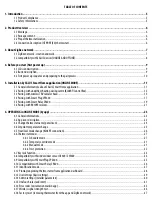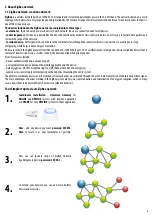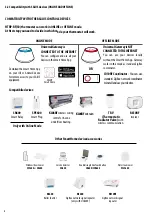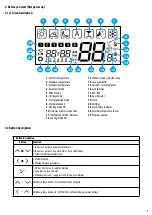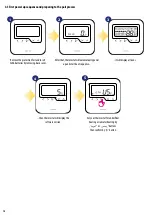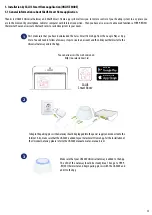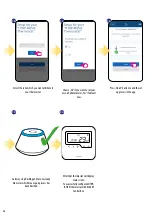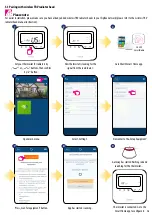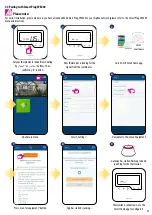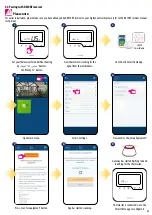
7
3. About ZigBee network
3.1 ZigBee network - creation and work
ZigBee
is a wireless network based on IEEE 802.15.4 standard and it’s communication takes place in the 2.4 GHz band. The network is based on a mesh
topology, which allows for a very large range and high reliability. The maximum range of direct communication between two network nodes (devices) is
about 100m in open space.
The devices included in the ZigBee network are divided into three types:
-
coordinator
- there can only be one such device in each network. It acts as a connection node for all devices;
-
router (repeater)
- this device is powered by 230VAC, with functionality similar to classic network routers, and it’s task is to forward data packets and
increase the range of the network;
-
terminal device
- battery powered, sends data to the coordinator (also through the router) to which it is connected. It is usually put to sleep
temporarily, which helps reduce energy consumption.
Built-in security in the ZigBee protocol (ISO-27001 and SSAE16 / ISAE 3402 Type II - SOC 2 certification) ensure high transmission reliability, detection and
removal of transmission errors, as well as connectivity between established priority devices.
Security measures include:
- devices authenticated using a unique key pair;
- encrypted communication between the mobile application and the device;
- data encryption - HTTPS encrypted using TLS, UDP channel with AES-128 encryption;
- layered access control to prevent tampering with one device threatening the entire system.
The ability to work many devices at a short distance from each other was achieved through the use of radio transmission of the spread spectrum signal.
The main advantages of devices working in the ZigBee system are two-way communication and minimization of energy consumption, which in many
cases allows them to be powered from chemical cells (alkaline batteries).
Four Simple steps
to create ZigBee network:
1.
Coordinator Installation
-
Universal Gateway
for
ONLINE
and
OFFLINE
systems with internet application
or
CO10RF
for only
OFFLINE
systems without application.
2.
Now
- add any device you want
powered 230VAC
.
Note
to locate it as near coordinator as possible.
3.
Now you can increase range of ZigBee network
by adding more devices
powered 230 VAC
.
4.
To extend your network you can add more battery
devices and accesories.
Summary of Contents for HTRP-RF(50)
Page 1: ...HTRP RF 50 THERMOSTAT FULL USER MANUAL...
Page 4: ......


